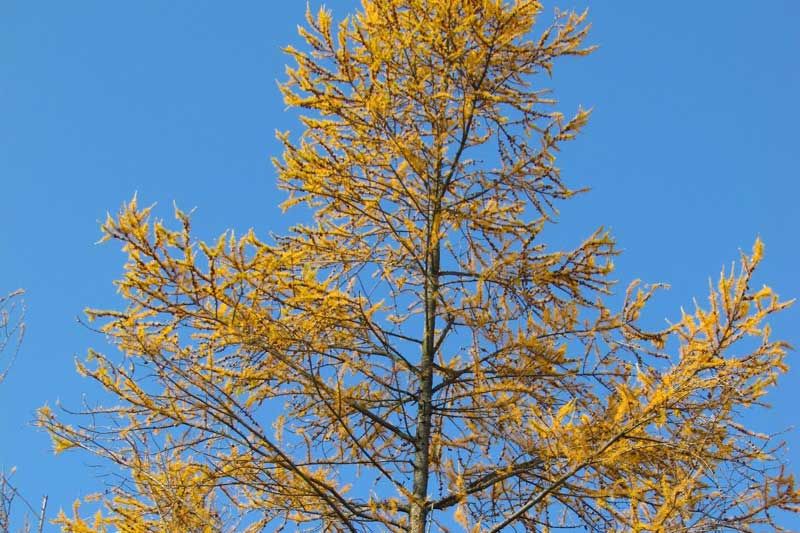Sep 03, 2014
By Lorraine Julien
Has anyone else noticed the defoliated stands of Tamarack along Hwy. 7 between Kaladar and Peterborough? My husband and I drive that stretch of the Trans-Canada on a regular basis and have noticed what appear to be dead or dying Tamaracks for the last few years. Wherever there are stands of these trees, they are either brown with no new growth or some may have a bit of green on them. It’s most noticeable during the spring and summer months when everything else is green. I’ve been concerned about them so I contacted the MNR and received the following information from Patrick Hodge, Forest Health Technical Specialist for Peterborough and Bancroft districts:
“Tamarack trees along Hwy. 7 from Kaladar to Peterborough are currently being defoliated by an exotic insect known as Larch Casebearer (Coleophora laricella). The Tamarack in this area are not dead but are undergoing a significant amount of stress due to this exotic pest. This insect will feed on both native Tamarack and European Larch. Young larvae begin to feed on developing foliage, resulting in hollowed needles that eventually wilt and turn red-brown. Consecutive seasons of feeding can cause a loss of vigour and branch dieback but seldom causes whole tree mortality. Occasionally a secondary insect native to Ontario known as Eastern Larch Beetle (Dendroctonus simplex) feed on stressed trees, taking advantage of their weakened state, reducing the flow of nutrients and causing eventual mortality. There have been no signs thus far of Eastern Larch Beetle in this area; however in north western Ontario and west into Minnesota this has been an ongoing issue for many years.”
In case you are not familiar with Tamaracks (Larches), these trees, when healthy, appear to be evergreen but, in the fall, their soft needles turn a golden colour and drop. They are in a unique category of tree called deciduous conifers. Soft new green needles appear in the spring but, during the winter months, the tree can appear to be dead. Also, like evergreens, these trees produce cones, (small ones about ½ inch long). Tamaracks are the heaviest and strongest of the softwoods in eastern and central Canada. The wood is very resistant to decay and for many years was used for railway ties, posts and telephone poles. Although Tamaracks are not abundant on the limestone areas of eastern Ontario, they do have the widest range of all North American conifers found across Canada, northern U.S. and Alaska.
The word “Tamarack” is the Algonquian name for the species and means “wood used for snowshoes”. Native peoples used Tamarack wood wherever toughness was required. Because of the strength and resistance to decay, this wood was used years ago in the construction of corduroy roads. The bark was used medicinally by Aboriginal people of north west Canada – for example: the inner bark was used as a poultice to treat cuts, infected wounds, frostbite, boils and hemorrhoids! Tamaracks are also commonly used for bonsai plants.
After a forest fire, they are one of the first trees to regenerate. They’re very cold-tolerant and can survive temperatures down to at least minus 65C.
I hope these amazing trees don’t go the way of the ash and elm trees.
More Stories
- Province clarifies stance - Says Private Well Water Testing Will Continue
- Frontenac County Stays Internal for CAO - Appoints Kevin Farrell
- Addington Highlands Tax Bill Going Up 6.93%
- Perth Road United Church Donation to The Grace Centre
- 21 Years Of Dump Life Left At South Frontenac Waste Site
- Eclipse 2024 – Once In A Lifetime
- National Tourism Week
- NeLL Spring Open House and Anniversary Concert
- 25 years at Bishop Lake Outdoor Centre
- Grounds Contracts Down, Custodial Contracts Up In Central Frontenac

